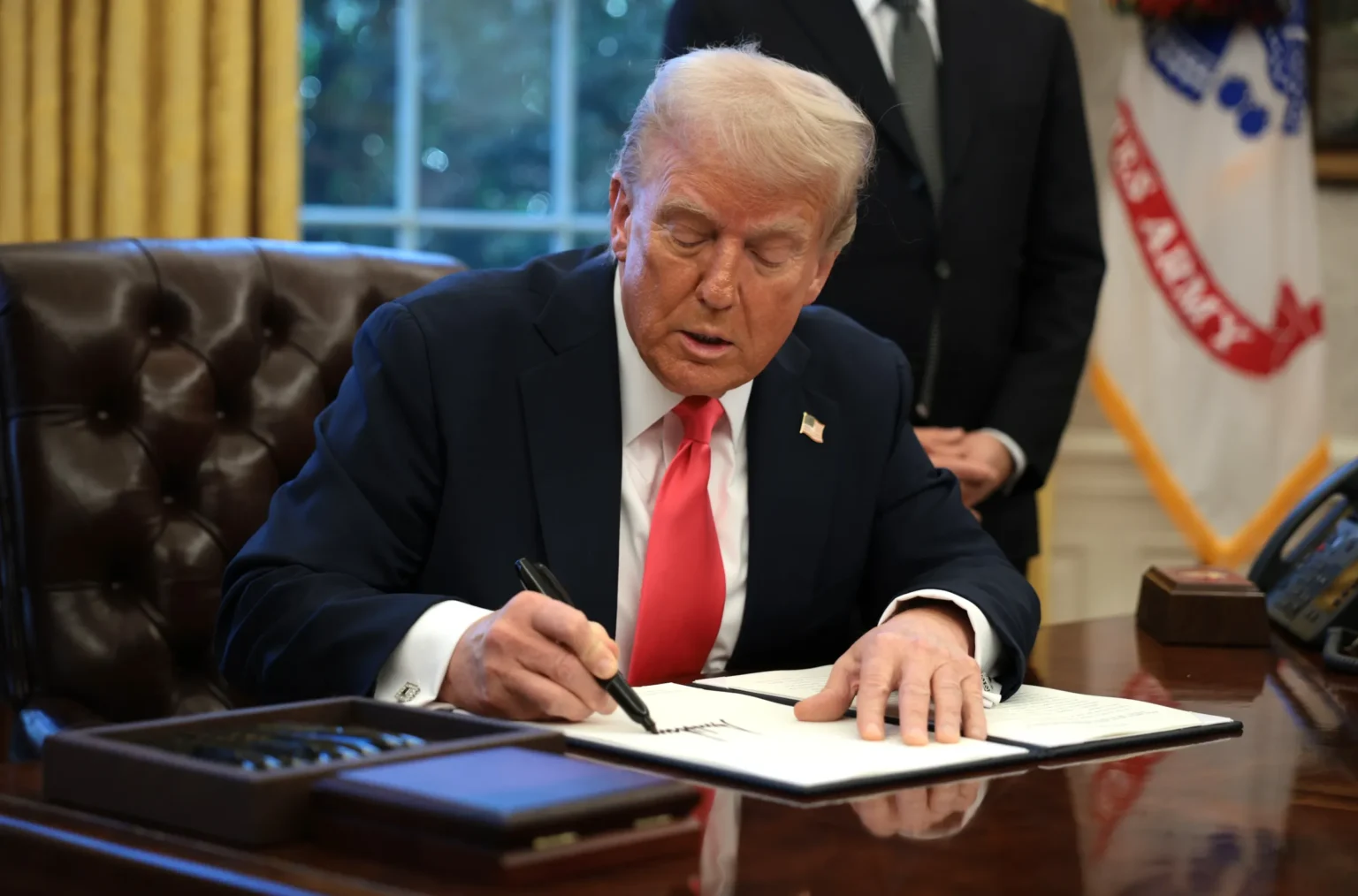The US business community is sounding the alarm over President Donald Trump’s newly announced tariffs, warning that these sweeping measures could drive up costs, disrupt supply chains, and negatively impact multiple industries. As the new tariff policy takes effect, businesses and consumers alike are bracing for significant economic shifts.
Trump’s Tariff Announcement: What You Need to Know
On the White House lawn, President Trump revealed a 10% baseline tariff on nearly all US trading partners, set to take effect on April 5. Additionally, from April 9, an even higher tariff rate will be imposed on countries that enforce tariff and non-tariff barriers against US businesses.
Among the most affected is China, where imported goods will face a combined 34% tariff, adding pressure to an already strained US-China trade relationship. Other major trading partners, including the European Union and India, will also see tariff increases of at least 20% starting April 9.
Impact on US Industries and Businesses
Several business groups have voiced serious concerns about the economic repercussions of these tariffs.
The National Restaurant Association cautioned that the new tariffs could create financial and operational challenges for restaurant owners, making it harder to keep their businesses open.
Meanwhile, Jay Timmons, President of the National Association of Manufacturers, warned that rising costs could stifle investment and job growth. “Many US manufacturers already operate on thin margins. These tariffs threaten jobs, supply chains, and America’s leadership in global manufacturing,” he stated.
Consumer and Economic Fallout
The US Chamber of Commerce has criticized the tariffs as a hidden tax on American consumers, arguing that they will drive up retail prices and weaken economic stability. Chief Policy Officer Neil Bradley urged policymakers to prioritize economic growth by extending tax policies, reducing regulatory burdens, and maximizing domestic energy potential.
A study by Yale University’s Budget Lab estimates that a universal 20% tariff on imports could cost the average US household at least $3,400 annually, a significant financial strain for American families already dealing with inflation.
Retaliation and Economic Risks
Trade experts warn that these aggressive tariffs could trigger retaliatory measures from global trading partners. Consumer Technology Association CEO Gary Shapiro criticized the policy, stating, “These massive tax hikes will drive inflation, eliminate jobs, and may even push the US into a recession.”
Support for the Tariffs: A Boost for Domestic Manufacturing?
Despite widespread opposition, some industry leaders have welcomed Trump’s trade policies. Scott Paul, President of the Alliance for American Manufacturing, praised the move, calling it a step toward protecting domestic jobs and industries. “For decades, unfair trade has hurt American workers. This decision gives them a fighting chance,” he said.
Conclusion
While Trump’s tariff plan is designed to prioritize American industries, it has ignited fierce debate over its potential economic impact. As the new policies take effect, businesses, consumers, and policymakers will closely watch for signs of supply chain disruptions, price increases, and global trade tensions. The long-term effects remain uncertain, but one thing is clear: US businesses are preparing for a new economic landscape.




